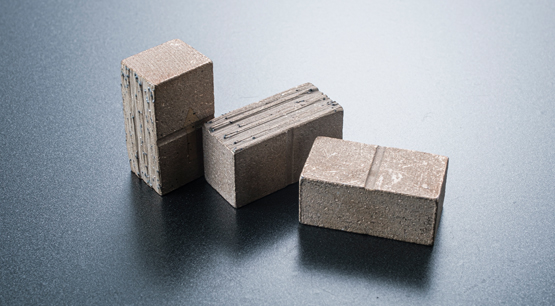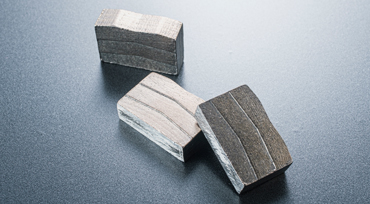Diamond saw blades are essential cutting and grinding tools with a wide range of applications. Here's a summary of key professional knowledge related to diamond saw blades:
1. Diamond Types: They can be categorized into natural diamonds and synthetic diamonds, with synthetic diamonds being more common in industrial tools due to their stability and cost-effectiveness compared to the scarce and expensive natural diamonds.
2. Diamond Particle Size: Particle size affects the type of task, with larger particles used for coarse grinding and smaller ones for fine grinding and cutting. Diamond saw blades generally use particles in the range of 50-120#, with 50-60# being common for cutting.
3. Diamond Particle Bonding: Diamonds are fixed onto metal substrates using methods such as electroplating, hot pressing, or brazing. Vacuum brazing, in particular, is gaining popularity as it's more environmentally friendly and offers sharper performance.
4. Metal Substrate: The choice of substrate material influences the blade's rigidity, weight, and heat dissipation. A good substrate is crucial for the blade's longevity.
5. Blade Types: Diamond blades come in various types, including circular blades, discs, and drill bits, each suitable for different cutting or grinding tasks.
6. Cooling and Lubrication: Adequate cooling and lubrication are essential to reduce heat and friction during cutting. Proper cooling water flow rates must be maintained to prevent overheating or blade slipping.
7. Safety Measures: Safety precautions, such as wearing appropriate personal protective equipment, are necessary when using diamond saw blades, especially circular blades, to minimize the risk of accidents.
8. Blade Maintenance: Regular maintenance, including cleaning, inspection, and re-embedding diamond particles, helps extend a blade's lifespan and maintain performance.
9. Application Areas: Diamond blades find widespread use in construction, mining, manufacturing, healthcare, glass processing, and more, for tasks like cutting, grinding, drilling, and carving. Their applications are continuously expanding into high-tech fields with advancements in metallurgy.
10. Selecting the Right Blade: Choosing the appropriate diamond saw blade depends on specific task requirements, including material type, cutting depth, speed, and surface quality. Proper blade selection and adjustment significantly reduce production and operational costs for stone processing companies.
Overall, understanding this knowledge helps users make the correct choices and use diamond saw blades to meet their specific cutting or grinding needs while ensuring safety and efficient operations.

Diamond Segment Expertise
Publish date:2023-09-02 09:37:32 Article From:Linsing diamond tools Clicks:










